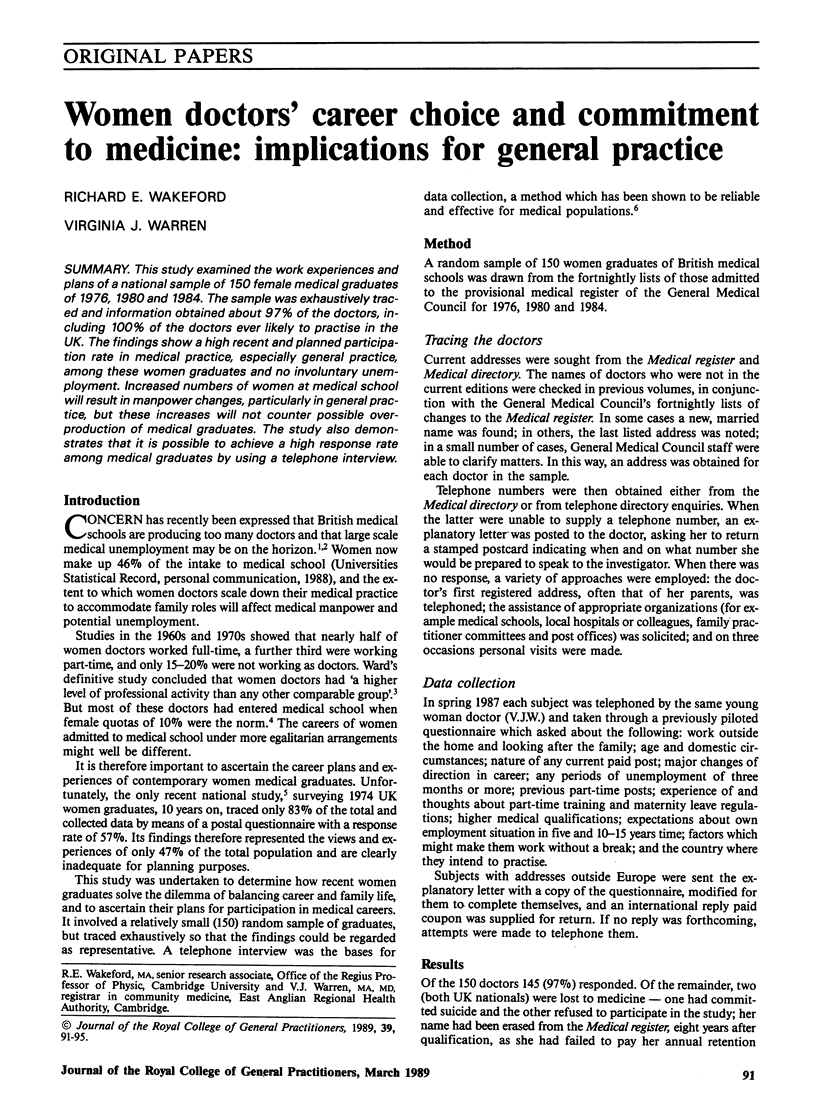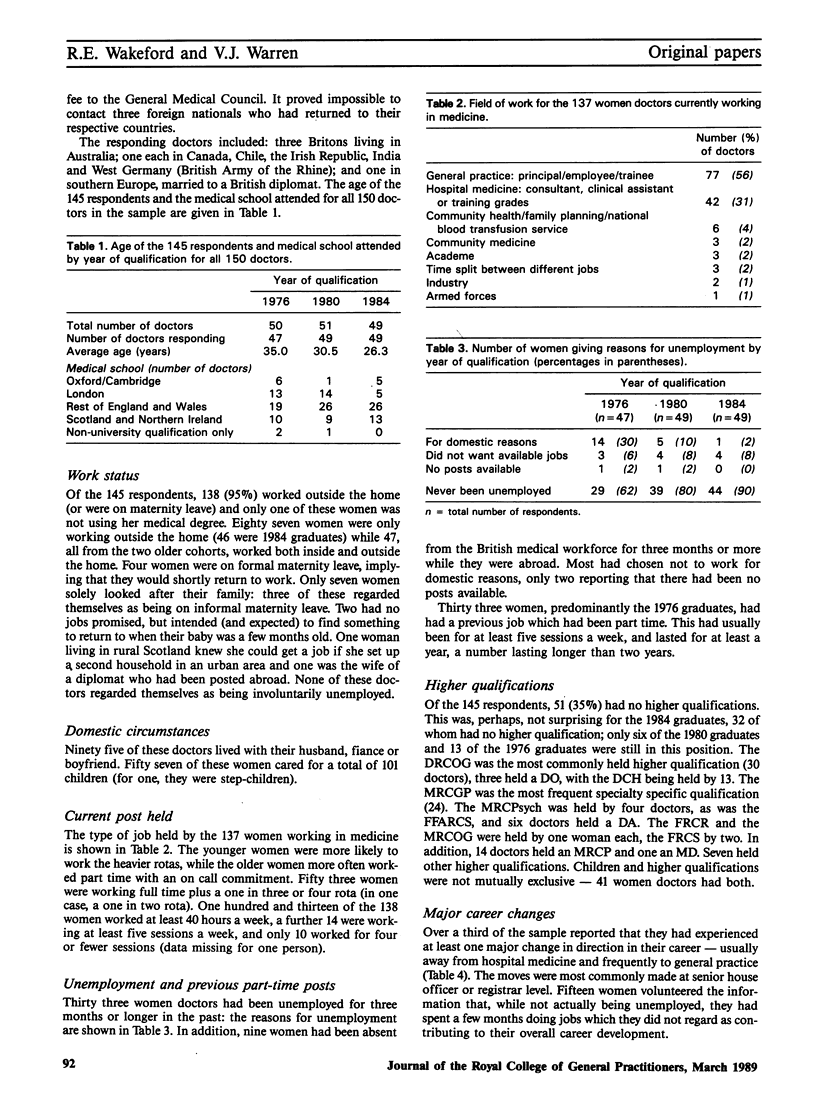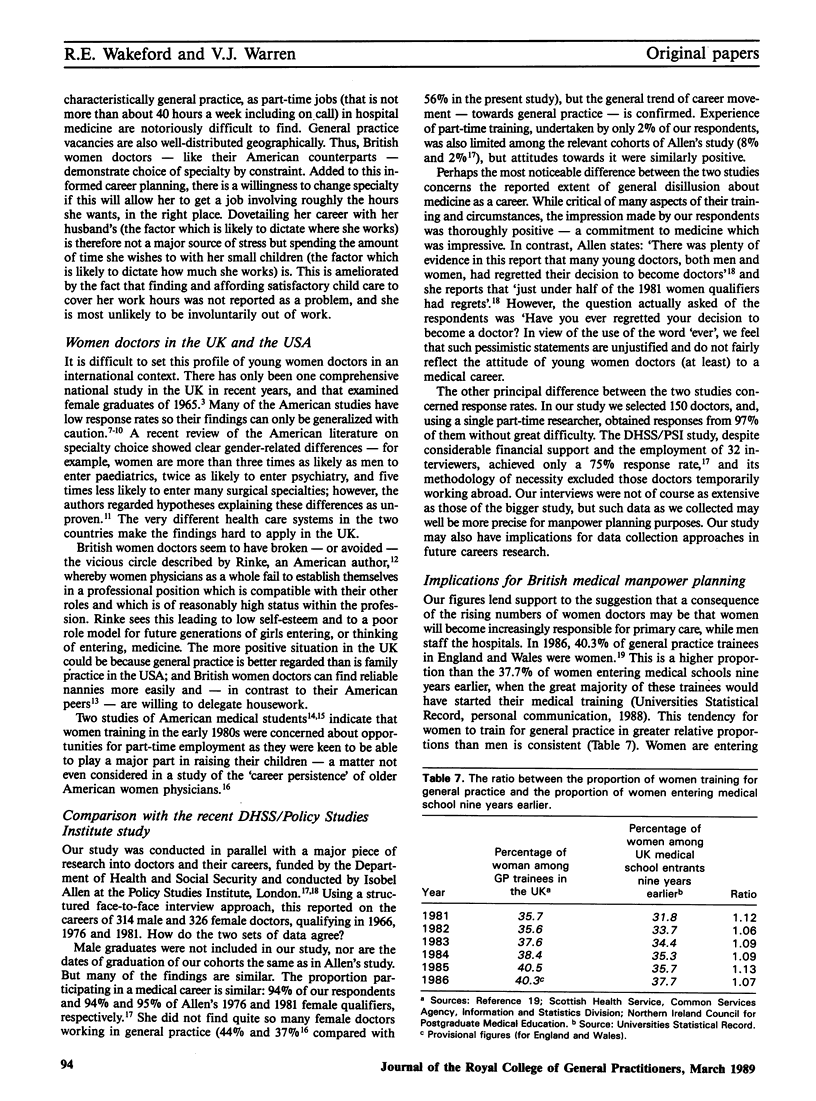Abstract
This study examined the work experiences and plans of a national sample of 150 female medical graduates of 1976, 1980 and 1984. The sample was exhaustively traced and information obtained about 97% of the doctors, including 100% of the doctors ever likely to practise in the UK. The findings show a high recent and planned participation rate in medical practice, especially general practice, among these women graduates and no involuntary unemployment. Increased numbers of women at medical school will result in manpower changes, particularly in general practice, but these increases will not counter possible overproduction of medical graduates. The study also demonstrates that it is possible to achieve a high response rate among medical graduates by using a telephone interview.
Full text
PDF




Selected References
These references are in PubMed. This may not be the complete list of references from this article.
- Adams E. K., Bazzoli G. J. Career plans of women and minority physicians: implications for health manpower policy. J Am Med Womens Assoc. 1986 Jan-Feb;41(1):17–20. [PubMed] [Google Scholar]
- Bergquist S. R., Duchac B. W., Schalin V. A., Zastrow J. F., Barr V. L., Borowiecki T. Perceptions of freshman medical students of gender differences in medical specialty choice. J Med Educ. 1985 May;60(5):379–383. doi: 10.1097/00001888-198505000-00004. [DOI] [PubMed] [Google Scholar]
- Cohen E. D., Korper S. P. Women in medicine: a survey of professional activities, career interruptions, and conflict resolutions. Trends in career patterns. (Second of two parts). Conn Med. 1976 Mar;40(3):195–200. [PubMed] [Google Scholar]
- Cohen E. D., Korper S. P. Women in medicine: a survey of professional activities, career interruptions, and conflict resolutions. Trends in medical education and specialization. Conn Med. 1976 Feb;40(2):103–110. [PubMed] [Google Scholar]
- Dimond E. G. Women in medicine: two points of view. I. The future of women physicians. JAMA. 1983 Jan 14;249(2):207–208. [PubMed] [Google Scholar]
- Kutner N. G., Brogan D. R. A comparison of the practice orientations of women and men students at two medical schools. J Am Med Womens Assoc. 1980 Mar;35(3):80–86. [PubMed] [Google Scholar]
- Lefford F. Women doctors: a quarter-century track record. Lancet. 1987 May 30;1(8544):1254–1256. doi: 10.1016/s0140-6736(87)92697-3. [DOI] [PubMed] [Google Scholar]
- Mandelbaum D. R. Education, medical training, and practice variables related to the career persistence of women physicians. J Am Med Womens Assoc. 1979 Oct;34(10):384-6, 389, 391. [PubMed] [Google Scholar]
- Nussey S. S., Pilkington T. R., Saunders K. B. Where will this month's medical school intake go? Lancet. 1986 Oct 25;2(8513):977–977. doi: 10.1016/s0140-6736(86)90627-6. [DOI] [PubMed] [Google Scholar]
- Pendleton D., Wakeford R. Studying medical opinion: a comparison of telephone interviews and postal questionnaires to general practitioners. Community Med. 1987 Feb;9(1):25–34. doi: 10.1093/oxfordjournals.pubmed.a043903. [DOI] [PubMed] [Google Scholar]
- Rinke C. M. The professional identities of women physicians. JAMA. 1981 Jun 19;245(23):2419–2421. [PubMed] [Google Scholar]
- Stephen P. J. Career patterns of women medical graduates 1974-84. Med Educ. 1987 May;21(3):255–259. doi: 10.1111/j.1365-2923.1987.tb00699.x. [DOI] [PubMed] [Google Scholar]
- Ward A. W. Careers of medical women. Br Med J (Clin Res Ed) 1982 Jan 2;284(6308):31–33. doi: 10.1136/bmj.284.6308.31. [DOI] [PMC free article] [PubMed] [Google Scholar]


